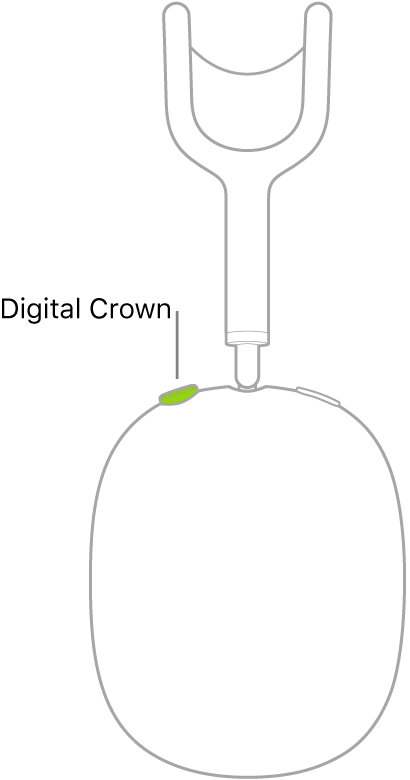iPod touch User Guide
- Welcome
- Your iPod touch
- What’s new in iOS 14
-
- Wake and unlock
- Learn basic gestures
- Adjust the volume
- Change or turn off the sounds
- Access features from the Lock Screen
- Open apps
- Take a screenshot or screen recording
- Change or lock the screen orientation
- Change the wallpaper
- Search with iPod touch
- Use AirDrop to send items
- Perform quick actions
- Use and customize Control Center
- Add widgets
- Charge and monitor the battery
- Learn the meaning of the status icons
- Travel with iPod touch
-
- Calculator
-
- View maps
-
- Use Siri, Maps, and widgets to get directions
- Choose your preferred type of travel
- Get driving directions
- Report traffic incidents
- Get cycling directions
- Get walking directions
- Get transit directions
- Change audio settings for turn-by-turn directions
- Select other route options
- Get directions between places other than your current location
- Delete recently viewed directions
- Use Maps on your Mac to get directions
- Help correct and improve Maps
- Get rides
-
- View photos and videos
- Delete and hide photos and videos
- Edit photos and videos
- Edit Live Photos
- Organize photos in albums
- Search in Photos
- Share photos and videos
- View Memories
- Find people in Photos
- Browse photos by location
- Use iCloud Photos
- Share photos with iCloud Shared Albums
- Use My Photo Stream
- Import photos and videos
- Print photos
- Shortcuts
- Stocks
- Tips
- Weather
-
- Accessories for charging iPod touch
-
- Set up AirPods
- Charge AirPods
- Start and stop audio playback
- Change the AirPods volume
- Make and answer calls with AirPods
- Switch AirPods between devices
- Use Siri with AirPods
- Listen and respond to messages
- Share audio with AirPods and Beats headphones
- Change noise control modes
- Restart AirPods
- Change the name of your AirPods and other settings
- Use other Bluetooth headphones
- Use EarPods
- Check headphone sound levels
- HomePod and other wireless speakers
- External storage devices
- Magic Keyboard
- Printers
-
- Get started with accessibility features
-
-
- Turn on and practice VoiceOver
- Change your VoiceOver settings
- Learn VoiceOver gestures
- Operate iPod touch using VoiceOver gestures
- Control VoiceOver using the rotor
- Use the onscreen keyboard
- Write with your finger
- Use VoiceOver with an Apple external keyboard
- Use a braille display
- Type onscreen braille
- Customize gestures and keyboard shortcuts
- Use VoiceOver with a pointer device
- Use VoiceOver in apps
- Zoom
- Magnifier
- Display & Text Size
- Motion
- Spoken Content
- Audio Descriptions
-
- Copyright
Start and stop iPod touch audio playback with AirPods
AirPods sense when you’re wearing them, and they automatically play or stop the audio from your iPod touch. To pause, resume, or skip audio playback, you can use the Digital Crown on AirPods Max, the Force Sensor on AirPods Pro, and taps on AirPods (1st and 2nd generation).
Hear what’s playing on your iPod touch
AirPods Max: Place AirPods Max on your head.
AirPods Pro and AirPods (1st and 2nd generation): Put one or both AirPods in your ears.
Stop the audio
AirPods Max: Remove AirPods Max from your head.
AirPods Pro and AirPods (1st and 2nd generation): Remove both AirPods from your ears, or if you’re wearing just one, remove it.
Pause the audio
AirPods Max: Press the Digital Crown once. Press it again to play.
You can turn the Digital Crown to change the volume. You can also use the Digital Crown to answer and end calls, ask for Siri, and end the reading of a new message.

AirPods Pro: Press the Force Sensor on either of your AirPods. To resume playback, press again.
If you press the Force Sensor for too long, a chime sounds, and the noise control mode changes.

You can also use the Force Sensor to answer and end calls, ask for Siri, change the noise control mode, and end the reading of a new message.
AirPods Pro and AirPods (1st and 2nd generation): While listening with both AirPods, remove one. When you return it to your ear, playback resumes automatically.
AirPods: (1st and 2nd generation) You can set either of your AirPods to pause when you double-tap it, then resume play when you double-tap it again. See Change the name and other settings for AirPods (1st and 2nd generation).
Skip tracks
AirPods Max: To skip forward, double-press the Digital Crown quickly. To skip backward, triple-press the Digital Crown quickly.
AirPods Pro: To skip forward, double-press the Force Sensor on either of your AirPods. To skip backward, triple-press the sensor.
AirPods: (2nd generation) To skip forward, double-tap either of your AirPods. You can set either of them to skip backward when you double-tap it. See Change the name and other settings for AirPods (1st and 2nd generation).
AirPods: (1st generation) You can set either of your AirPods to skip forward or backward when you double-tap it. See Change the name and other settings for AirPods (1st and 2nd generation).
If you don’t want AirPods to automatically play and stop the audio, you can turn off Automatic Head Detection or Automatic Ear Detection.
